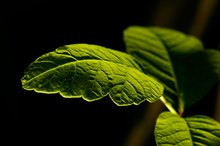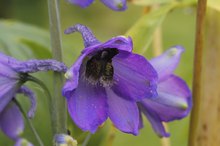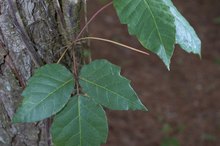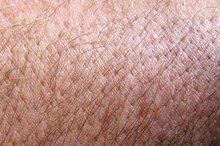Elephant Ear Skin Irritation and Treatment
Elephant's Ear (Alocasia) is a common outdoor garden plant and container plant for indoors. The plant gets its common name from the shape of the enormous leaves. All parts of the Elephant's Ear plant are considered toxic. Many people experience severe skin irritation from contact with Elephant Ear’s leaves. Ingestion of Elephant's Ear can be fatal and immediate emergency room treatment may be required.
If you are experiencing serious medical symptoms, seek emergency treatment immediately.
Identification
Elephant's Ear is a perennial tropical summer ornamental plant that does well in outdoor landscapes or indoor container gardens. The green plant has heart-shaped leaves with white veins. According to the University of Florida, it grows in USDA hardiness zones 8b through 11 1. The average plant height is 2 to 10 feet with a spread of 1 to 10 feet.
- Elephant's Ear is a perennial tropical summer ornamental plant that does well in outdoor landscapes or indoor container gardens.
Contact Dermatitis
Can You Die From Poison Oak?
Learn More
Contact with the leaves, stems or roots of the Elephant's Ear plant can cause mild to severe contact dermatitis. Skin irritation consists of burning, itching and possible inflammation. The National Eczema Association recommends wearing latex-free gloves when handling plants that can cause skin irritation or contact dermatitis as a preventative measure. The Association advises that most often contact dermatitis is seen on the hands, arms or other body parts that came into direct contact with the irritant.
- Contact with the leaves, stems or roots of the Elephant's Ear plant can cause mild to severe contact dermatitis.
- The National Eczema Association recommends wearing latex-free gloves when handling plants that can cause skin irritation or contact dermatitis as a preventative measure.
Misconceptions
Some gardeners believe the only way to get skin irritation from Elephant's Ear plants is to have contact with the leaves or the blooms. Contact with any part of this plant can cause mild to severe skin irritation.
Over-the-Counter Treatment
Allergies That Cause Itching
Learn More
Over-the-counter treatments for other irritating plants, such as poison ivy, often work well for treatment of mild skin irritation from exposure to Elephant's Ear plant parts. Washing the area with mild body soap and rinsing in lukewarm water can soothe the initial itching and irritation while removing the oils from the skin to prevent further irritation. Oral antihistamines can help reduce itching, burning and inflammation from the skin irritation. According to the National Eczema Association, topical analgesics, moisturizing creams and lotions can provide temporary relief from contact dermatitis symptoms.
- Over-the-counter treatments for other irritating plants, such as poison ivy, often work well for treatment of mild skin irritation from exposure to Elephant's Ear plant parts.
- According to the National Eczema Association, topical analgesics, moisturizing creams and lotions can provide temporary relief from contact dermatitis symptoms.
Prescription Treatment
Severe skin irritation may require the use of prescription topical and oral drugs. It is important to let the attending physician know that the patient came in contact with the Elephant's Ear plant. Seek emergency room treatment if any part of the plant was ingested.
- Severe skin irritation may require the use of prescription topical and oral drugs.
- Seek emergency room treatment if any part of the plant was ingested.
Warning
The treatment information in this article does not replace the experience or recommendations of a licensed physician. Any type of skin allergy should never be left untreated. Seek emergency room treatment immediately if there is the presence of hives or blisters on the skin, tongue, mouth or other body areas from contact with Elephant's Ear plants.









